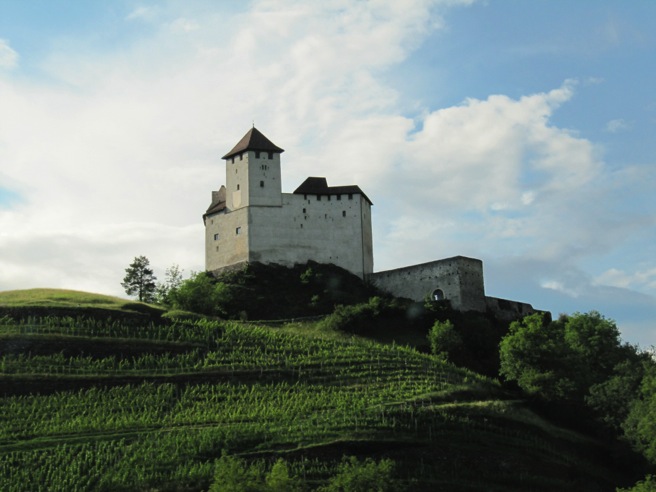Where Old Buildings Withstand Earthquakes Best

DENVER — Old buildings may be the safest spot to be when in Liechtenstein.
A new study in this tiny European country reveals that buildings constructed during the Middle Ages ride out earthquakes better than those built to modern standards. The reason for this counterintuitive truth appears to be that old buildings were constructed so that the floor doesn't attach to the walls.
"Instead of rolling like a boat," these structures actually stabilize during quakes, said study researcher Maria Brunhart-Lupo, a geologist at the Colorado School of Mines in Golden, Colo.
The foundation "just sinks and kind of seats itself deeper in the sedimentary layers, preventing damage to the overlying structure," Brunhart-Lupo told LiveScience.
Long-lived town
The issue of earthquake safety in Liechtenstein is close to Brunhart-Lupo's heart. Her family is from Balzers, a tiny town in western Liechtenstein that has been inhabited since the Iron Age (between 1200 B.C. and 500 B.C.). The town itself has been officially recognized since A.D. 800, and it centers around a castle that was first recorded in the history books in the 1200s. [See Images of Historic Balzers]
Balzers sits in a seismically active spot. Liechtenstein is between Switzerland and Austria, and the tectonic forces that created the Alps are still grinding along, causing an average of two unnoticeable earthquakes a day in Balzers. Occasionally, a noticeable temblor comes along, as in 2012, when a magnitude-5.4 quake shook the area. Many modern buildings cracked, and broken windows and balconies crumbled off into the streets. The older buildings, however, seemed to get through the quake just fine.
Get the world’s most fascinating discoveries delivered straight to your inbox.
"After the large earthquake, I noticed the discrepancy in damage reports and in which buildings needed repair, and began to look into why this issue might be arising," Brunhart-Lupo said.
Surviving seismicity
Her mapping of the damage revealed that Brunhart-Lupo's hunch about which buildings had pulled through best was right: The older buildings in town had less damage. To figure out why, Brunhart-Lupo examined the structure of Gutenberg Castle, one of the old structures in town that hasn't had new construction added on top of it.
She found that the castle floor is not attached to the castle walls. In the Middle Ages, the first floor was for holding pens for livestock, Brunhart-Lupo told an audience at the annual meeting of the Geological Society of America last week. The level was open-air, and the floor did not connect to the walls. Over the years, settlement — hastened along by the occasional earthquake — has sunk the walls deeper into the ground, creating a very deep foundation.
"Whatever happens to the building is independent of the floor," Brunhart-Lupo said. In comparison, modern buildings are attached on all sides, so forces on the foundation end up tearing at the walls.
The same separated construction style was used in farmhouses surrounding the castle, she said, but those are harder to examine because years of building on top of the old foundations makes it impossible to see the original construction without digging up someone's basement.
Following old construction methods may be a better bet for Balzers and nearby areas, Brunhart-Lupo said, but it's hard to make that call because the geology of the region has never been thoroughly mapped.
"Given that no official mapping or assessment of the area has ever been done, the study does show that to simply apply 'new, safer' construction methods without looking at the historic component of a region is not the best approach," she said.
Follow Stephanie Pappas on Twitter and Google+. Follow us @livescience, Facebook & Google+. Original article on LiveScience.

Stephanie Pappas is a contributing writer for Live Science, covering topics ranging from geoscience to archaeology to the human brain and behavior. She was previously a senior writer for Live Science but is now a freelancer based in Denver, Colorado, and regularly contributes to Scientific American and The Monitor, the monthly magazine of the American Psychological Association. Stephanie received a bachelor's degree in psychology from the University of South Carolina and a graduate certificate in science communication from the University of California, Santa Cruz.
